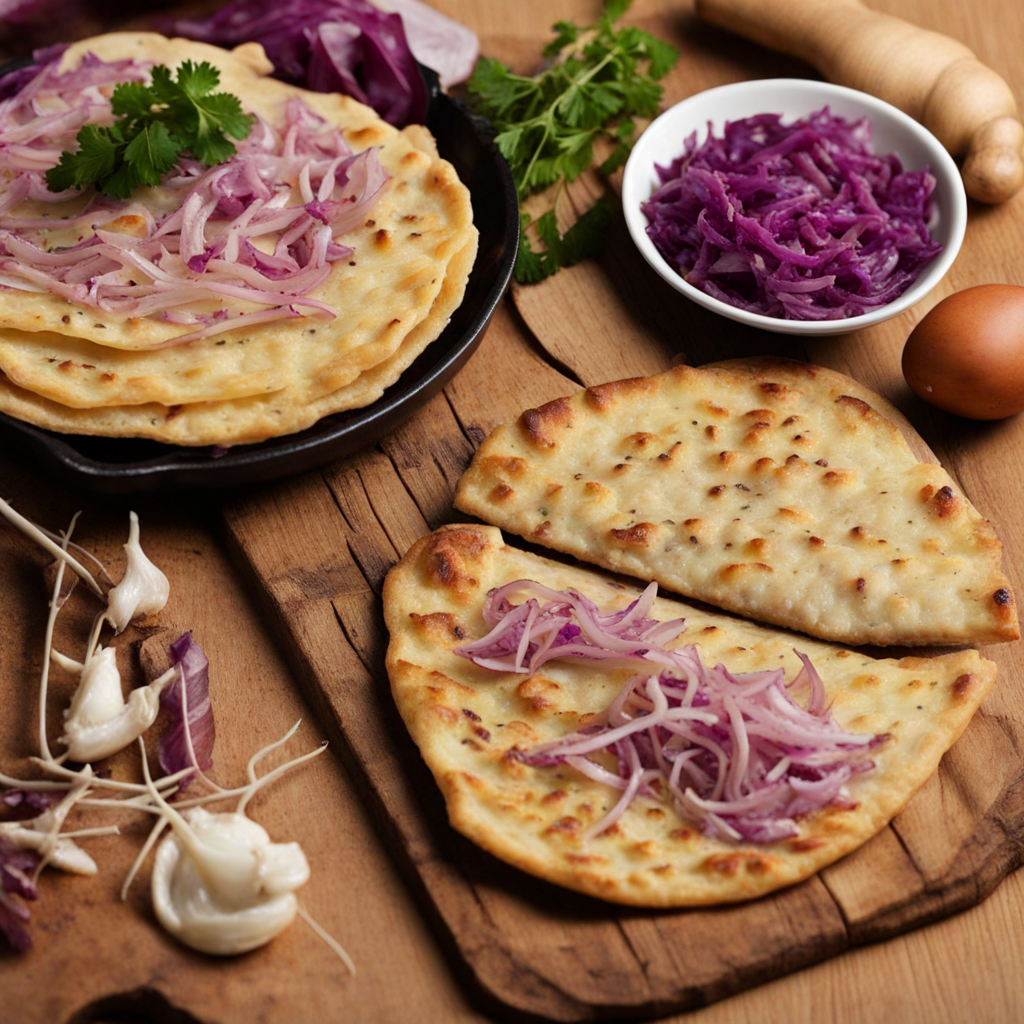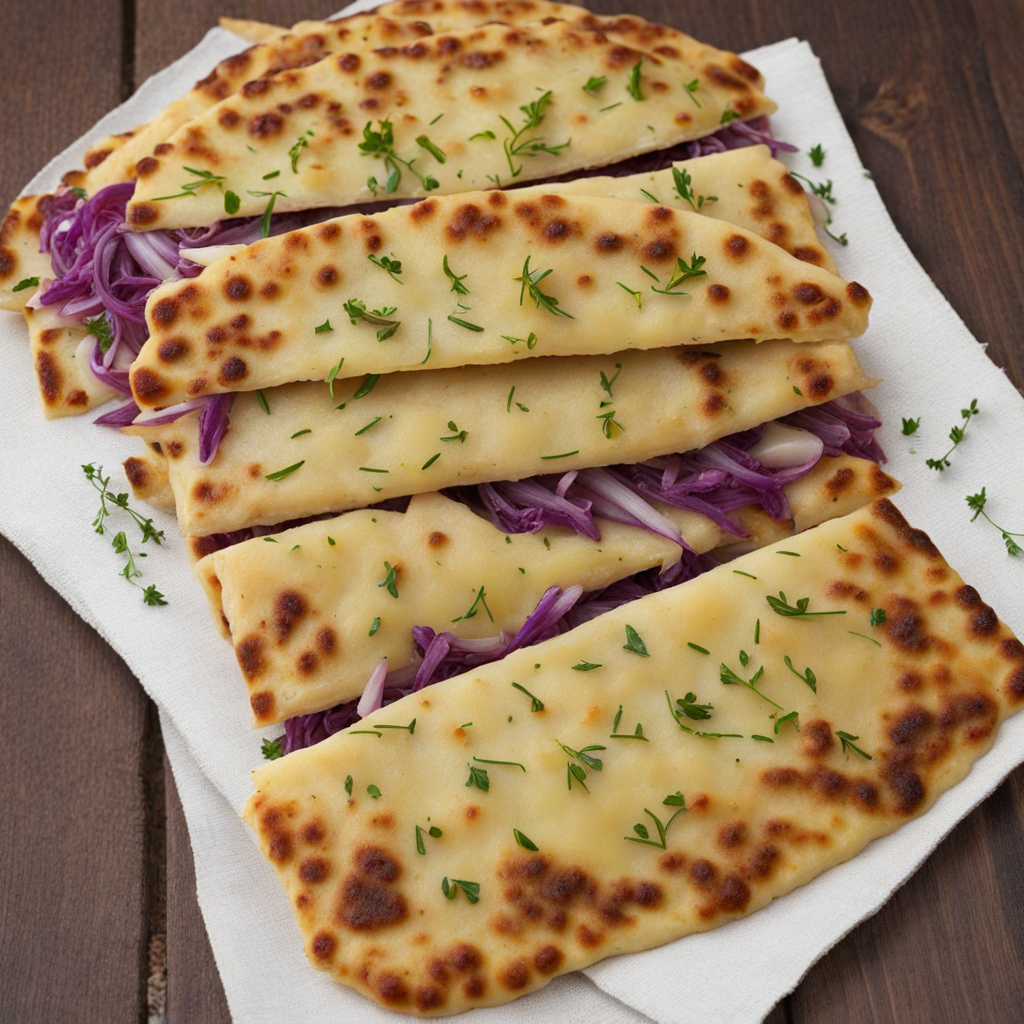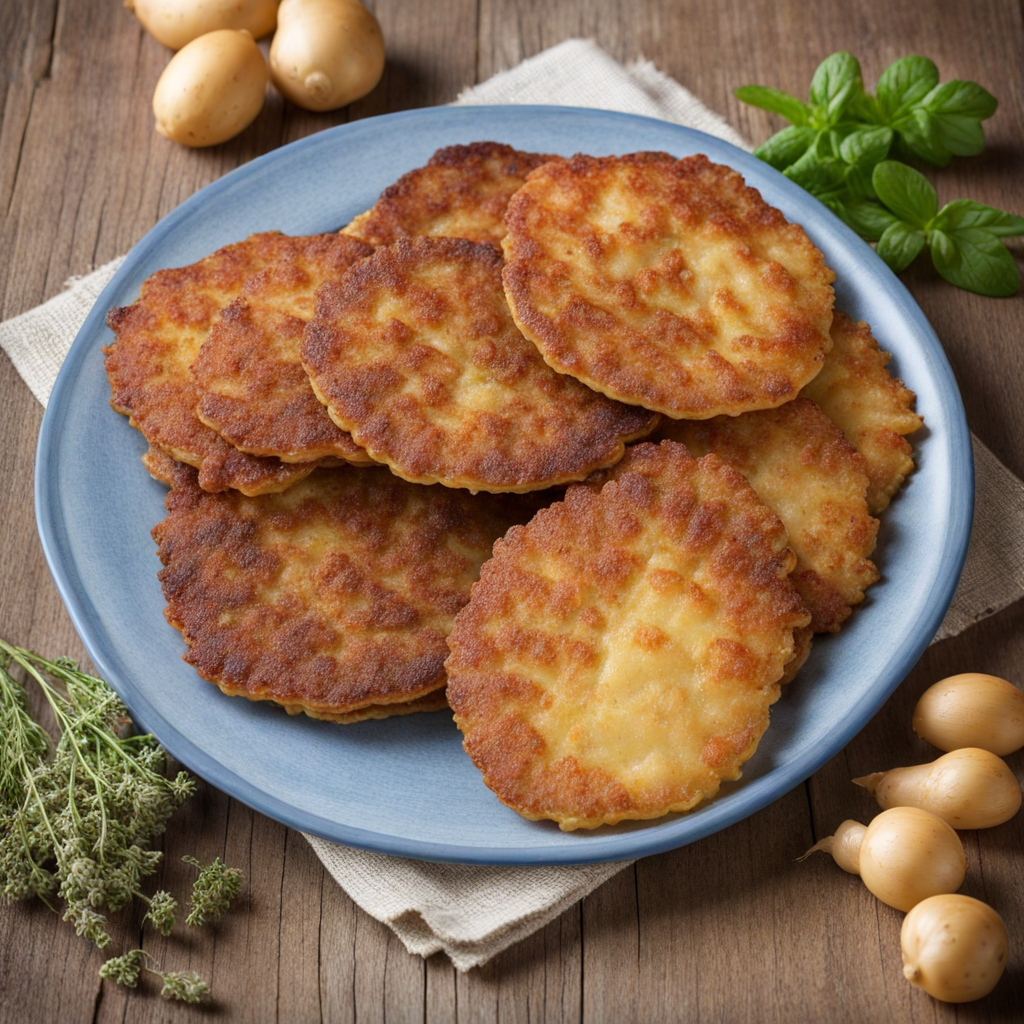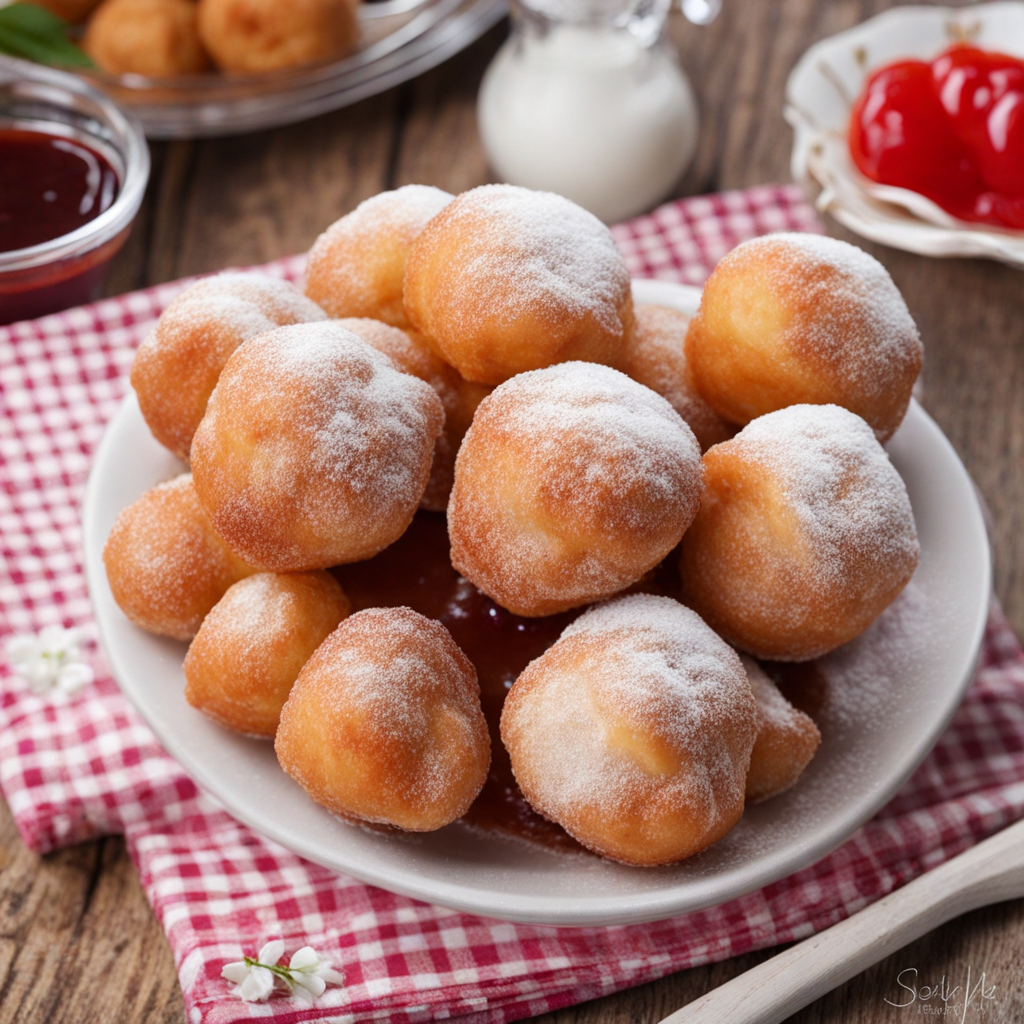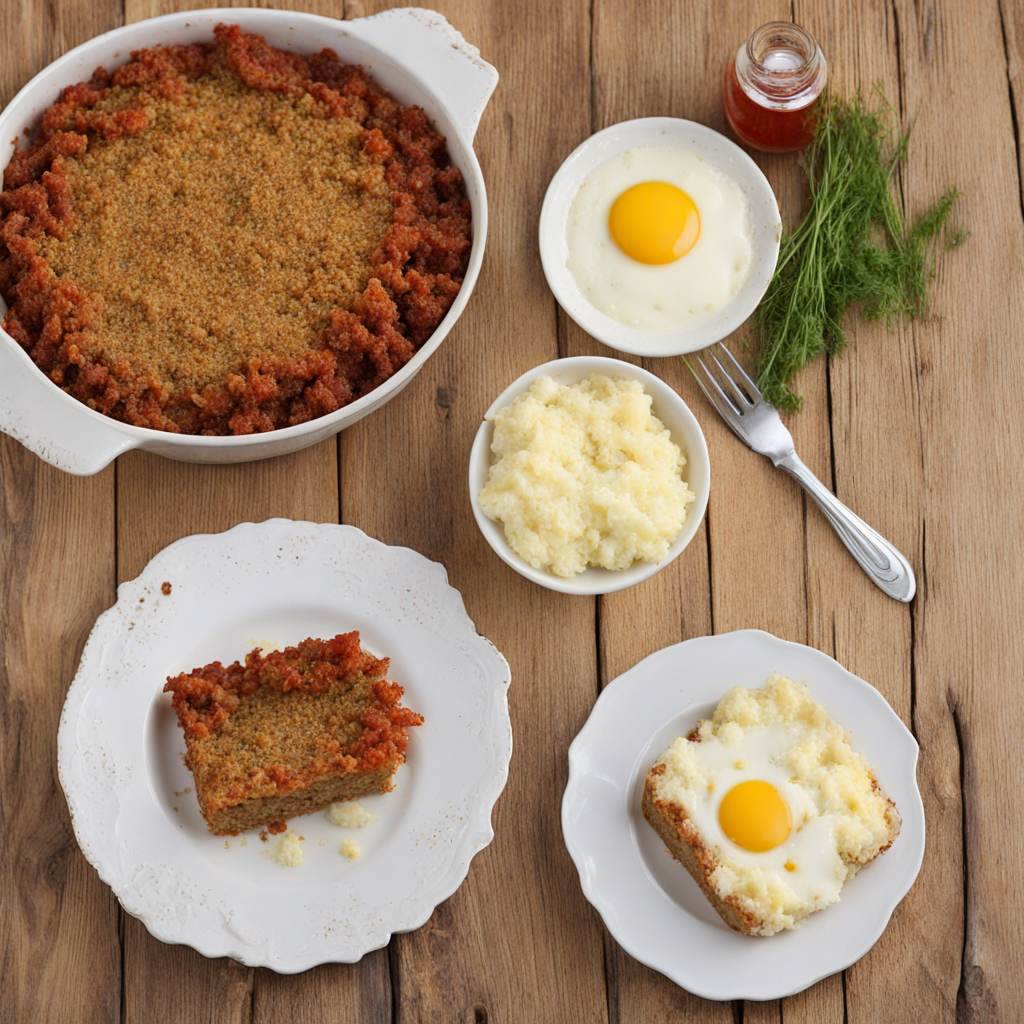Lokše
Lokše is a traditional Slovak dish that embodies the rustic charm of Central European cuisine. These flatbreads are primarily made from simple ingredients—potatoes, flour, and salt—resulting in a delightful combination of flavors and textures. The dough is typically prepared with cooked and mashed potatoes, which give Lokše a unique softness and a slightly sweet undertone. Once rolled out and cooked on a hot griddle, they develop a slightly crispy exterior while remaining tender on the inside. This makes them an ideal accompaniment to various savory dishes or simply enjoyed on their own. Traditionally, Lokše are served with duck or goose, often accompanied by rich sauces, gravies, or even sweet fillings. The savory version is sometimes topped with a layer of lard, sprinkled with salt, or filled with sauerkraut, creating a perfect balance of flavors. Alternatively, they can be made sweet, filled with poppy seeds, jam, or sweetened cottage cheese, providing a delightful contrast to the more common savory preparations. This versatility allows Lokše to shine at any meal, from a hearty dinner to a delightful dessert. The experience of tasting Lokše is not just about the flavors; it's also about the cultural significance and the memories they evoke. Often prepared during festive occasions or family gatherings, these flatbreads symbolize warmth and togetherness. The way they are made—sometimes passed down through generations—adds an extra layer of authenticity. Whether you're savoring them for the first time or rediscovering a childhood favorite, Lokše offers a comforting taste of Slovakia that invites you to explore the heart of its culinary traditions.
How It Became This Dish
Lokše: A Culinary Journey through Slovakia’s History In the heart of Central Europe lies Slovakia, a nation rich in cultural heritage and traditional cuisine. Among its many culinary offerings, lokše stands out as a beloved dish that embodies the spirit and resilience of the Slovak people. These thin potato pancakes, often served with a variety of fillings, have a history that intertwines with the agricultural practices, regional identities, and cultural traditions of Slovakia. Origins of Lokše Lokše has its roots in the simple yet resourceful cooking practices of Slovak peasants. Traditionally made from potato dough, lokše emerged in the late 18th to early 19th centuries, coinciding with the widespread cultivation of the potato in Europe. Originally brought to Europe from the Americas, potatoes became a staple food for many, particularly in regions where other crops struggled to thrive. Their adaptability and nutritional value made them an essential part of the Slovak diet. The word "lokša" itself is believed to derive from the old Slavic word "lokš," which means "flat." This is a fitting description, as lokše are indeed flat, thin pancakes that can be easily cooked on a hot surface. The use of potatoes in lokše reflects the ingenuity of Slovak cooks, who turned a humble ingredient into a versatile dish that could be enjoyed in various ways. Cultural Significance Lokše is more than just a dish; it is a symbol of Slovak identity and heritage. In many Slovak households, lokše is associated with special occasions and family gatherings. Traditionally, they are served during festive meals, particularly during the harvest season and on holidays. One of the most notable occasions for preparing lokše is during the Christmas season when they are often filled with poppy seeds, jam, or sweetened cottage cheese. The preparation of lokše is a communal activity, bringing families together in the kitchen. The process of peeling, boiling, and mashing potatoes, followed by mixing them with flour to create the dough, fosters a sense of togetherness. This shared experience is reflective of the Slovak ethos, where food serves as a connector between generations, preserving cultural traditions while adapting to contemporary tastes. Lokše also holds an important place in Slovak folklore and customs. Often, they are served with duck or goose, especially during festive occasions. This pairing is steeped in tradition, as it reflects the agricultural practices of the region, where farming and livestock rearing have been integral to rural life. The combination of lokše with rich, savory dishes symbolizes abundance and gratitude for the harvest. Evolution Over Time As Slovakia underwent various political and social changes, so too did the preparation and consumption of lokše. The Austro-Hungarian Empire, which included Slovakia, influenced culinary practices through the introduction of new ingredients and techniques. This period saw lokše being served in more elaborate forms, with fillings that included meats, cheeses, and seasonal vegetables, reflecting a blend of local and imperial culinary influences. In the 20th century, with the advent of industrialization and urbanization, traditional cooking methods began to wane. However, lokše remained a staple in many Slovak households, often passed down through generations. The rise of the slow food movement in the late 20th century brought renewed interest in traditional foods, including lokše. This movement emphasized the importance of local ingredients, sustainable practices, and the preservation of culinary heritage. Today, lokše can be found in various forms across Slovakia, from the rustic kitchens of rural families to upscale restaurants that reinterpret the dish for modern palates. Chefs are experimenting with flavors, offering innovative fillings such as smoked cheese, wild mushrooms, and even contemporary twists like truffle oil. This evolution demonstrates the adaptability of lokše, allowing it to remain relevant in a rapidly changing culinary landscape. Lokše in Contemporary Slovakia In contemporary Slovakia, lokše continues to be a cherished dish, celebrated for its versatility and rich history. They are often served at traditional festivals, farmers' markets, and national holidays, where they are enjoyed alongside other Slovak specialties, such as bryndzové halušky (potato dumplings with sheep cheese) and kapustnica (sauerkraut soup). The presence of lokše at these events reinforces their cultural significance and fosters a sense of national pride. The globalization of food culture has also impacted the way lokše are perceived and consumed. Slovak expatriates around the world have brought their culinary traditions with them, leading to a resurgence of interest in lokše among Slovak communities abroad. Furthermore, the rise of social media has allowed for the sharing of recipes and stories, connecting individuals with their heritage and encouraging a new generation to embrace this traditional dish. In recent years, lokše has also found its way into fusion cuisine, where chefs blend Slovak flavors with international influences. This experimentation not only showcases the adaptability of lokše but also highlights the ongoing dialogue between tradition and modernity in Slovak gastronomy. The dish serves as a canvas for creativity, allowing chefs to honor their roots while exploring new culinary horizons. Conclusion Lokše is more than just a culinary delight; it is a representation of Slovakia's rich history, cultural identity, and agricultural heritage. From its humble origins as a peasant food to its modern interpretations in contemporary cuisine, lokše has remained a beloved staple in Slovak households. Its preparation fosters community and family bonds, while its presence at festive occasions reflects the enduring spirit of tradition. As Slovakia continues to evolve, so too will lokše, adapting to new tastes and trends while remaining firmly rooted in its cultural significance. For those who partake in this delightful dish, each bite of lokše is a taste of history, a connection to the past, and a celebration of the vibrant culinary landscape of Slovakia. Whether enjoyed with savory fillings or sweet accompaniments, lokše will undoubtedly continue to hold a special place in the hearts and kitchens of Slovaks for generations to come.
You may like
Discover local flavors from Slovakia


